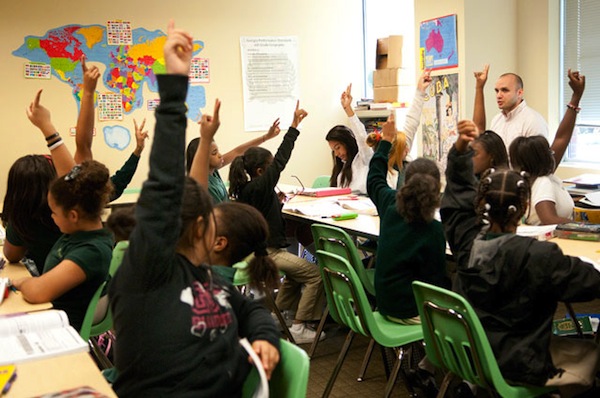Study Shows Graphic Novels Add Value to K-12 Student Learning

Graphic novels may have a place in the classroom as an alternative form of literature, according to researchers.
Diane Lapp, distinguished professor of education at San Diego State University -- along with researchers Thomas DeVere Wolsey, Douglas Fisher, and Nancy Frey -- surveyed elementary, middle, and high school teachers about the effectiveness of using graphic novels in the classroom as well as their willingness to use the material for primary instruction for their students.
The results found in the study, published in Boston University’s Journal of Education, are complex. For nearly every category of educational use, the response was overwhelmingly “never.” Yet, a fourth of the teachers did say that they used graphic novels for struggling students or English Language Learners (ELL) either once a month or once a week.
Still, there was hesitation on the part of teachers to classify graphic novels as a primary reading tool as opposed to supplementary teaching. Seventy-five percent of the teachers surveyed find graphic novels to be best for enrichment, motivation, and secondary reading.
Comic books have historically been enjoyed by children, recounting tales of hero figures fighting off the bad guys in a quest to protect cities they police. The modern graphic novel — often characterized as longer-form comic narratives or collected works of comic book stories — offers complex plot lines and rich textual development that make it a plausible literary form for young adult and adult readers.
These graphic novels have the ability to engage advanced readers, but also provide appropriate content to challenge students struggling to grasp reading comprehension and language acquisition.
“I believe teachers are conflicted about using graphic novels for instruction because they’re not taught how to do this in their educational methods courses and they really don’t see any models of it in the classrooms in which they are student teaching.” said Lapp in an audio interview with Boston University professor and Journal of Education editor Lee Indrisano.
Lapp and her colleagues believe the lack of graphic novels in the classroom comes from the entertainment purpose of comics, the knowledge and experience on how to incorporate graphic novels in their classrooms, and the limited access of the materials in school.
While most teachers they interviewed had not read comic books or graphic novels, some noted that budgetary restrictions as well as limits on curriculum and instructional material choices hampered the ability of teachers to use graphic novels to teach their students.
From one teacher:
I did not grow up reading graphic novels, nor were they promoted in my schooling. However, I feel that this is a great way to teach inferencing and visualization with all students, as well as supporting struggling readers and English Learners. I am going to make it a goal of ours to implement graphic novels next year across our 4th grade, supplementing the reading curriculum.
Another teacher expressed appreciation for publishers who promote education-oriented comics. The series "Max Axiom," published by Capstone Kids, was recognized as a great learning tool. The comic series follows Max Axiom, an ordinary guy who was struck by a “megacharged lightning bolt,” as he explores his newly acquired energy by studying scientific phenomena around the world.
Other publishers have gone on to illustrate classic novels giving them a radical and sometimes sinister feel. The Boxcar Children, Nancy Drew, and The Hardy Boys have all been turned into graphic novels.
"No Fear Shakespeare" is a graphic novel series from the publishers of SparkNotes. It has taken some of William Shakespeare’s best-known plays — including "Romeo and Juliet", "Macbeth", and "A Midsummer Night’s Dream" — and given them an artful twist with illustrations and a modern English translation.
The new Common Core State Standards Initiative may help buffer teacher demands for graphic novels to be included in reading and language arts curriculum. For states that chose to implement Common Core, the initiative offers teachers an opportunity to select texts (beyond the suggested list of 300 titles) that encompass the goals of the initiative in preparing students for college and a career.
The creators of Common Core expanded the definition of literary texts to include multimedia and the more controversial federal documents. The standards recommend three components when making text selection: complexity, quality and range. With the expanded definition, teachers can potentially introduce graphic novels as a substantial academic tool worthy of literary merit.
With comic stores ordering roughly $163 million worth of comic books and graphic novels this year to line their shelves, the market and demographics for comic book lovers is widening. No longer associated with “nerd culture”— thanks in part to blockbuster films like “Watchmen,” "Marvel's The Avengers," and “The Dark Knight” trilogy — the comic book industry is in a position to push for the inclusion of comics in the classroom alongside traditional literature.





